Amazon Long-tail Keyword Strategy to Fuel Your PPC Campaigns
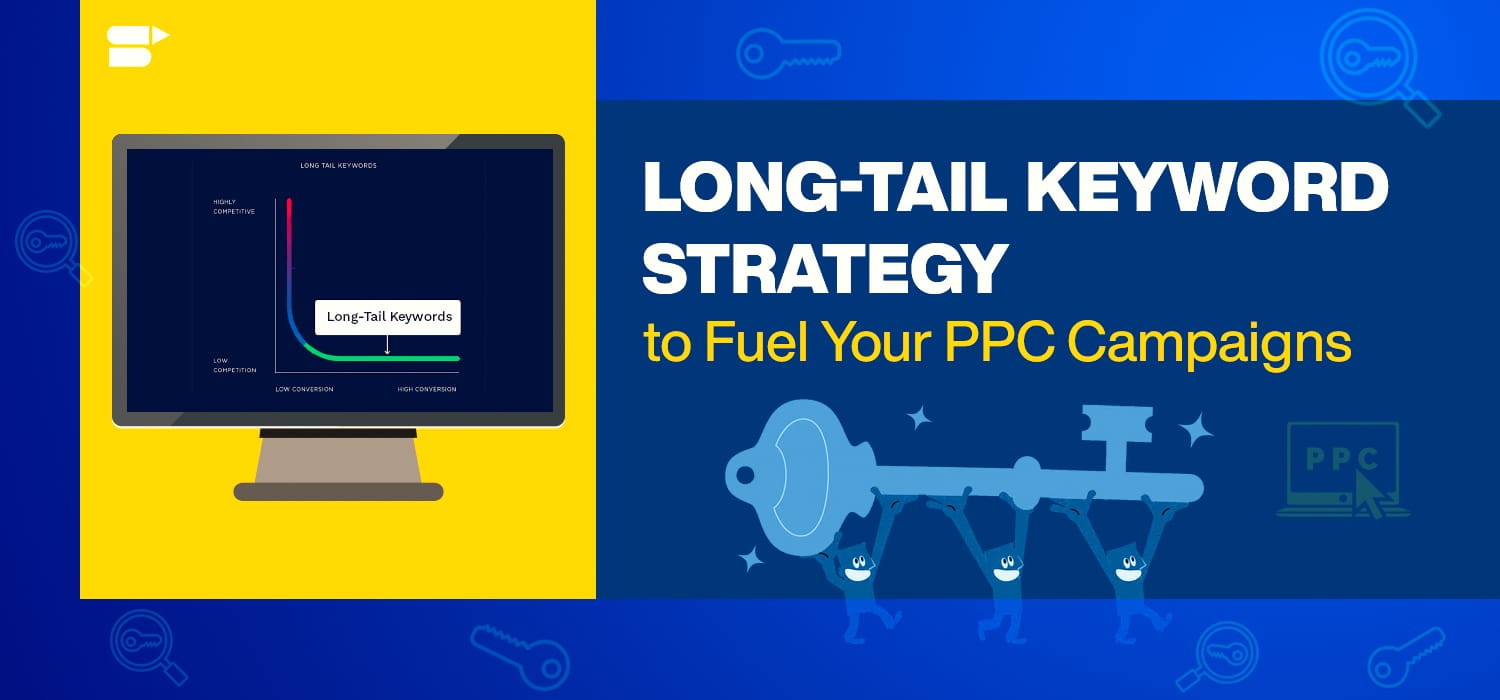
As advertising campaigns are scaling success more and more, using seed keywords has become more prevalent than before.
So including low-volume keywords and long-tail keywords has been imperative to effectively optimize your ad spend and boost your conversions.
In this blog post, let’s see why we need long-tail keywords and how you can improve your conversions by finding the best long-tail keywords for your products.
Here’s a quick peek into the article
- What are Long-tail Keywords?
- Importance of Long-tail Keywords
- Uses of Long-tail keywords
- How to find Long-tail Keywords for your ad campaigns
- How to use long-tail keywords on Amazon
- LSI Keywords for Amazon Products
- Final Thoughts
What are Long-tail Keywords?
For new e-commerce sellers, long-tail keywords are a group of keywords that are more specific for the products used by your buyers. Customers choose to use these keyword phrases if they are close to the point of purchase product of their choice. Also, long-tail keywords are more beneficial if customers use voice search to search for their product.
Importance of Long-tail Keywords
Keyword research is one of the primary steps for any eCommerce seller. Conducting additional research will help you go the extra mile in your business. Take a little time to niche down on your long-tail keywords. This helps to push your brand to the top. As customers get nearer to choosing their desired product, long-tail keywords increase your conversion rate. This, in turn, increases your product ranking on your marketplace like Amazon.
Typically, long-tail keywords are ideal for a new seller as they have:
- Less competition,
- Low CPC,
- And, high buying intent.
Related Post: Perform Keyword Research For Amazon Products – Using SellerApp
Uses of Long-tail keywords
Implementing a long-tail keyword strategy is considered a tactical move for eCommerce businesses that want to rank higher for their buyer keywords.
Here are our main reasons to implement a long-tail keyword strategy in your Amazon PPC campaigns.
Less competition – As mentioned, they have less competition because long-tail keywords are relevant for fewer products. So, it is easier to rank organically and secure a higher position in the search results.
More Conversions – Customers searching with long-tail keywords have high purchasing intent, and they are considered more qualified leads. So, a customer visiting your listing has a huge chance to buy your product. This boosts your conversions and improves your organic search ranking.
Related Post: Top 12 Tips to Rank Higher on Amazon in 2021
How to find Long-tail Keywords for your ad campaigns
You can find relevant long-tail keywords using three popular ways:
- Keyword research tools like SellerApp
- Google Keyword Planner (search term report)
- Amazon Sponsored Ad Search term report (if you’re already running ads on Amazon)
Keyword tools like SellerApp
If you are a new seller trying to understand how long-tail keywords work or a potential seller looking to ease your job, then you can use the SellerApp keyword research tool to find potential keywords.
If you’re not sure, you can start with our free tools first. But we’d suggest you sign up on the dashboard for unique and detailed keyword results.
All you need to do is log in to your free trial account on the dashboard and click on the keyword research tool. Add the keyword of your choice and find the results.
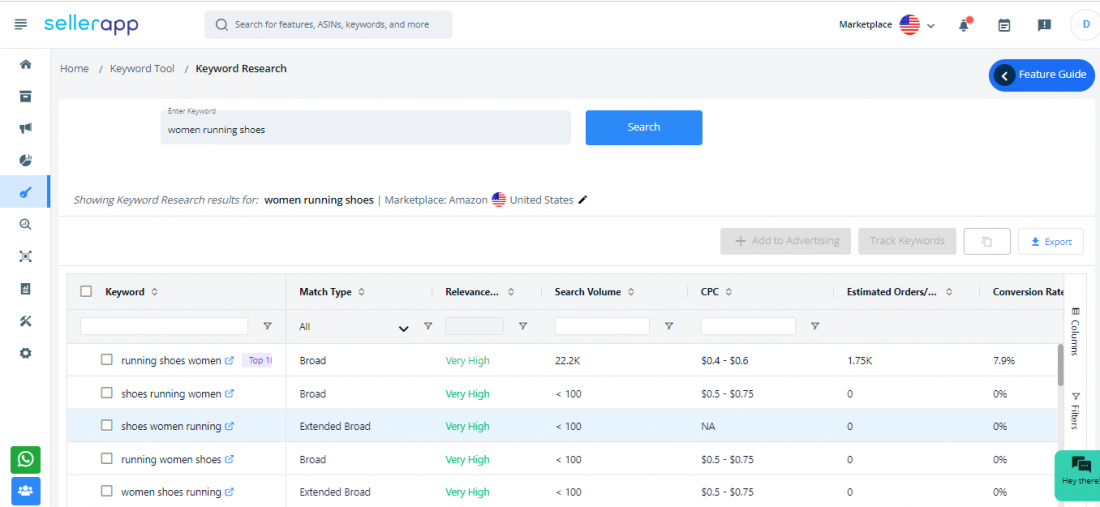
You can see the list of long-tail keywords with match type, relevancy, search volume, and CPC rates.
Choose the long-tail keywords which are highly relevant to your product and start bidding higher on them in your PPC campaigns. Once you start gaining more clicks and conversions for these keywords, your organic search rank gets better for the same keywords.
Google Keyword Planner
Google keyword planner is a go-to tool for most marketers and eCommerce sellers. On the other hand, we have Google Search Term Report to find out which search terms are performing well for your ads within Google’s search network.
Using this report, you can find out search terms that have huge potential, and also you can find out search terms that are not relevant to your business and mark them negative in your ad campaigns.
Amazon Search Term Report
If you are advertising on Amazon, you should try using the Amazon search term report for long-tail keywords.
Let’s see how to find out the Amazon search term report from seller central.
- Go to your Amazon Seller Central account and hover over to the Advertising tab
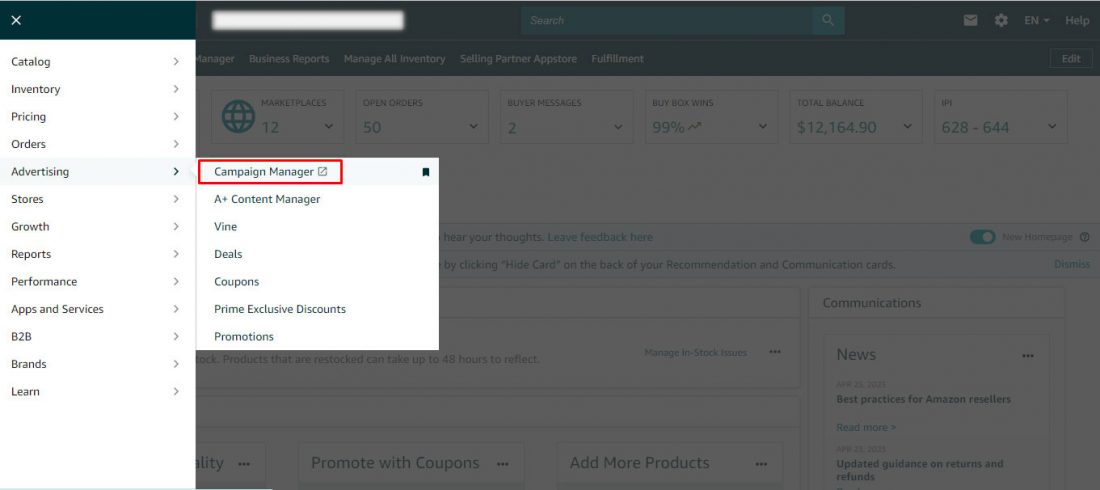
- Here, click Campaign Manager. On the next page, you can find the Measurement and Reporting section.
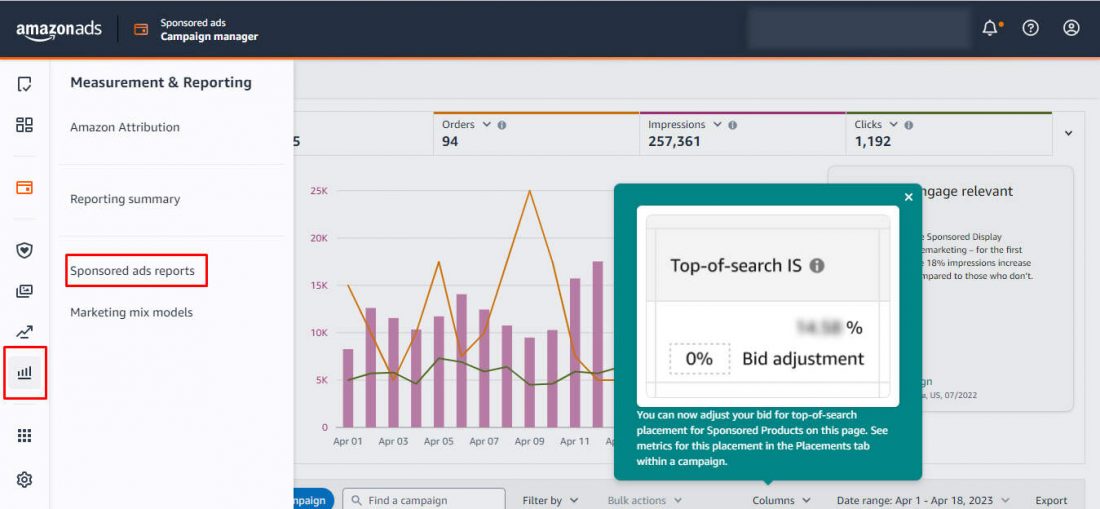
- Now, select Create Report.
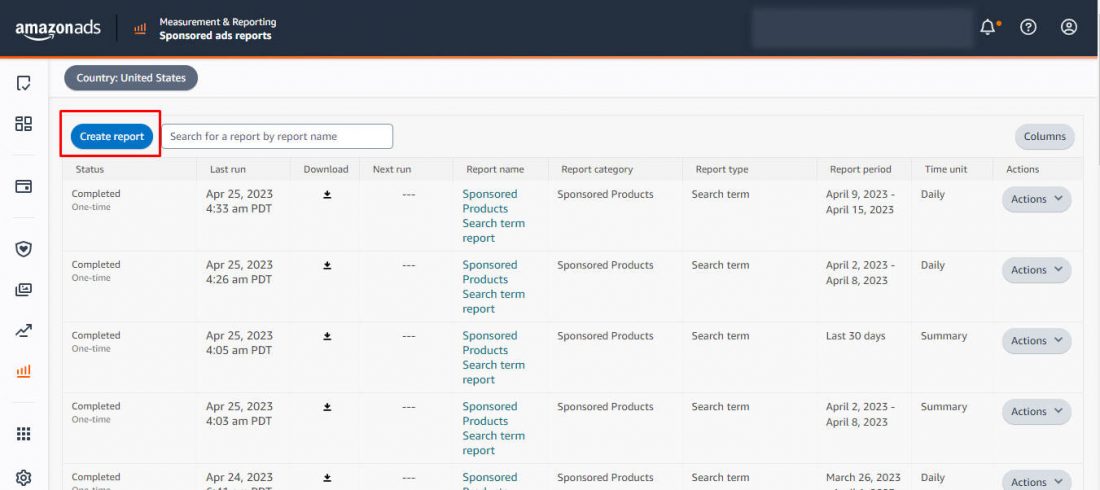
- On the next page, you will find Configuration and Report Settings. Ensure you select the search term in the report type. You can choose the report category.
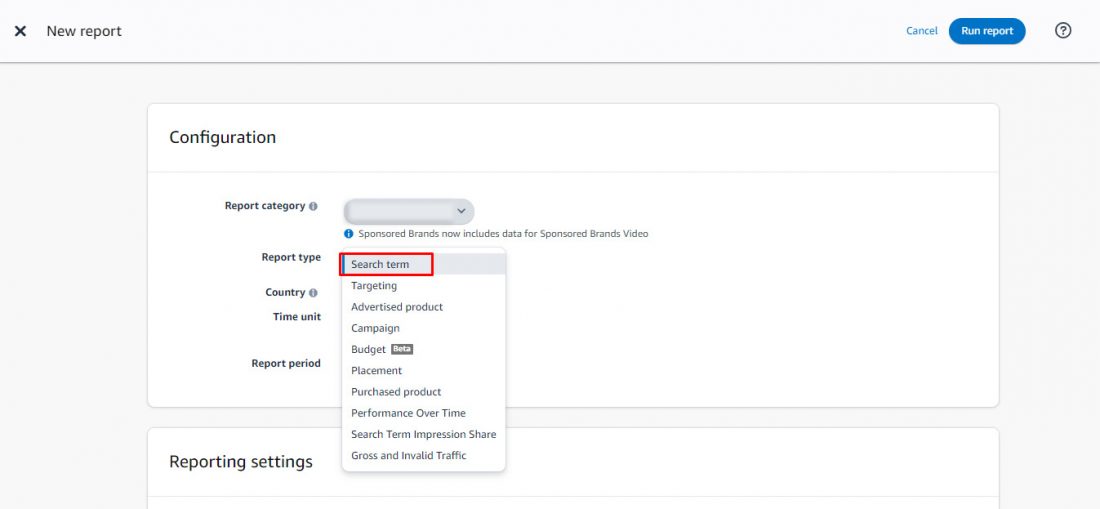
- Now, name the report in order to differentiate it from other reports. Set the time period of the report as needed. Typically, it would be 30-60 days.
- Next, click on the Run report.
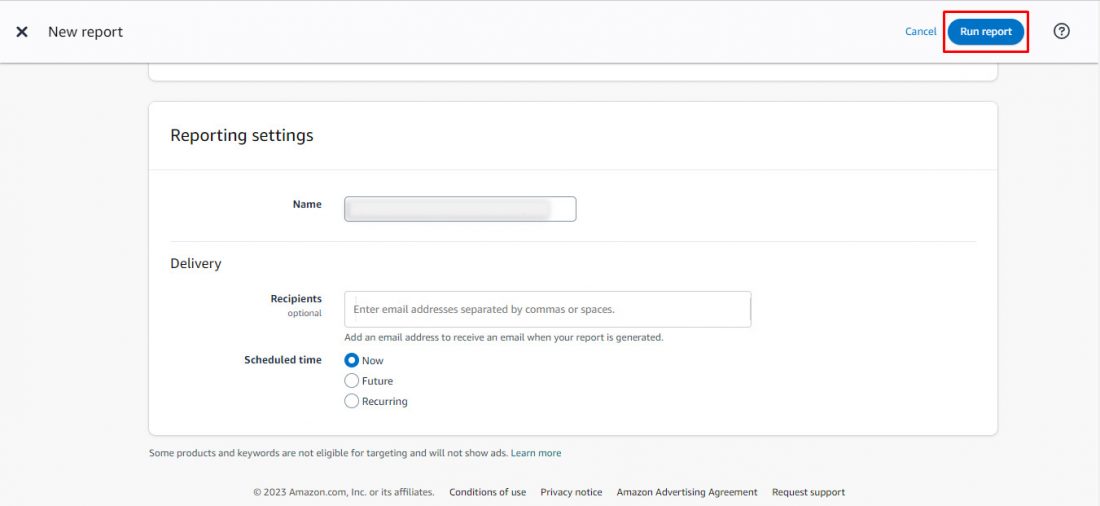
- Download the file which is available in .xlsx format. Open the report to find the search terms and Amazon long-tail keywords.
How to use long-tail keywords on Amazon?
You can choose metrics like search volume and orders to find what keywords work well for you. Sort the report based on these metrics. You can find potential long-tail keywords that can increase your conversion rate and will get you a higher organic rank. Try using these keywords in your campaigns, and listings to boost your sales.
LSI Keywords for Amazon Products
Now that you know how to find long-tail keywords for your Amazon product, it’s time to focus on improving your product listing’s ranking. One way to do this is by using LSI keywords.
LSI keywords are semantically related keywords that are related to one another and help search engines understand the context of your search terms and provide the most relevant result.
So, what does this mean for Amazon sellers?
By adding relevant LSI keywords in the product title, bullet points, and backend keywords, you give Amazon more context about your product. It helps the product listing to rank higher on the search result and reach a wider audience.
How to find Amazon LSI keywords
One of the easiest ways to find LSI keywords is by starting with basic keyword research and analyzing the autocomplete results in Amazon’s search bar.
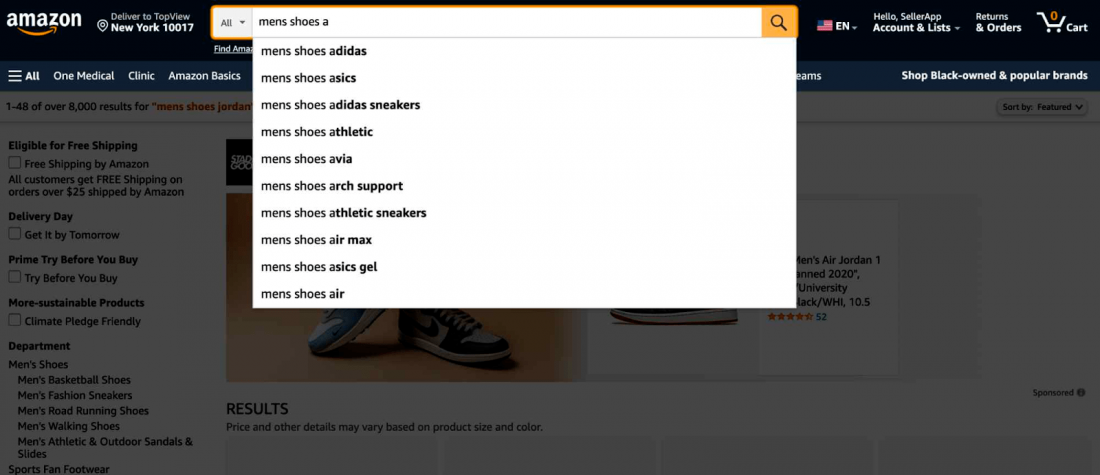
It provides you with valuable insights into the long-tail and LSI keywords that potential customers use to search for products similar to yours.
Simply type in a primary keyword related to your product, such as “men’s shoes,” into Amazon’s search bar.
As you start typing, you’ll see a list of autocomplete suggestions appear below the search bar. These suggestions are based on the most popular searches related to your initial keyword.
For example, if you type “mens shoes a,” the search suggestions may include “mens shoes Adidas,” “men’s shoes as is,” “men’s shoes athletic,” and so on.
Similarly, if you type “mens shoes b,” the search suggestions may include “mens shoes black,” “men’s shoes brooks,” and so on.
Include the highly relevant keywords in your product listing and as backend search terms.
Final Thoughts
Often, long-tail keywords are the most overlooked and under-utilized ones in improving your conversion rate. Not all long-tail keywords are relevant to your business. You can narrow down the best long-tail keywords and phrases that align the most with your products/services. Target those keywords and improve your other customer metrics such as shipping rate and customer service. This helps you scale your business growth in the longer run.
Additional read:
How Is AI Bringing Change to E-commerce?




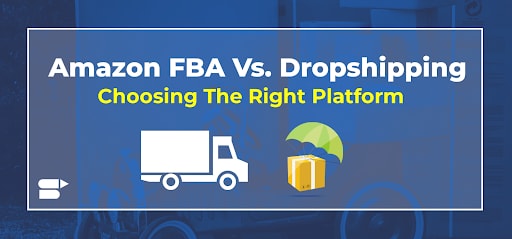
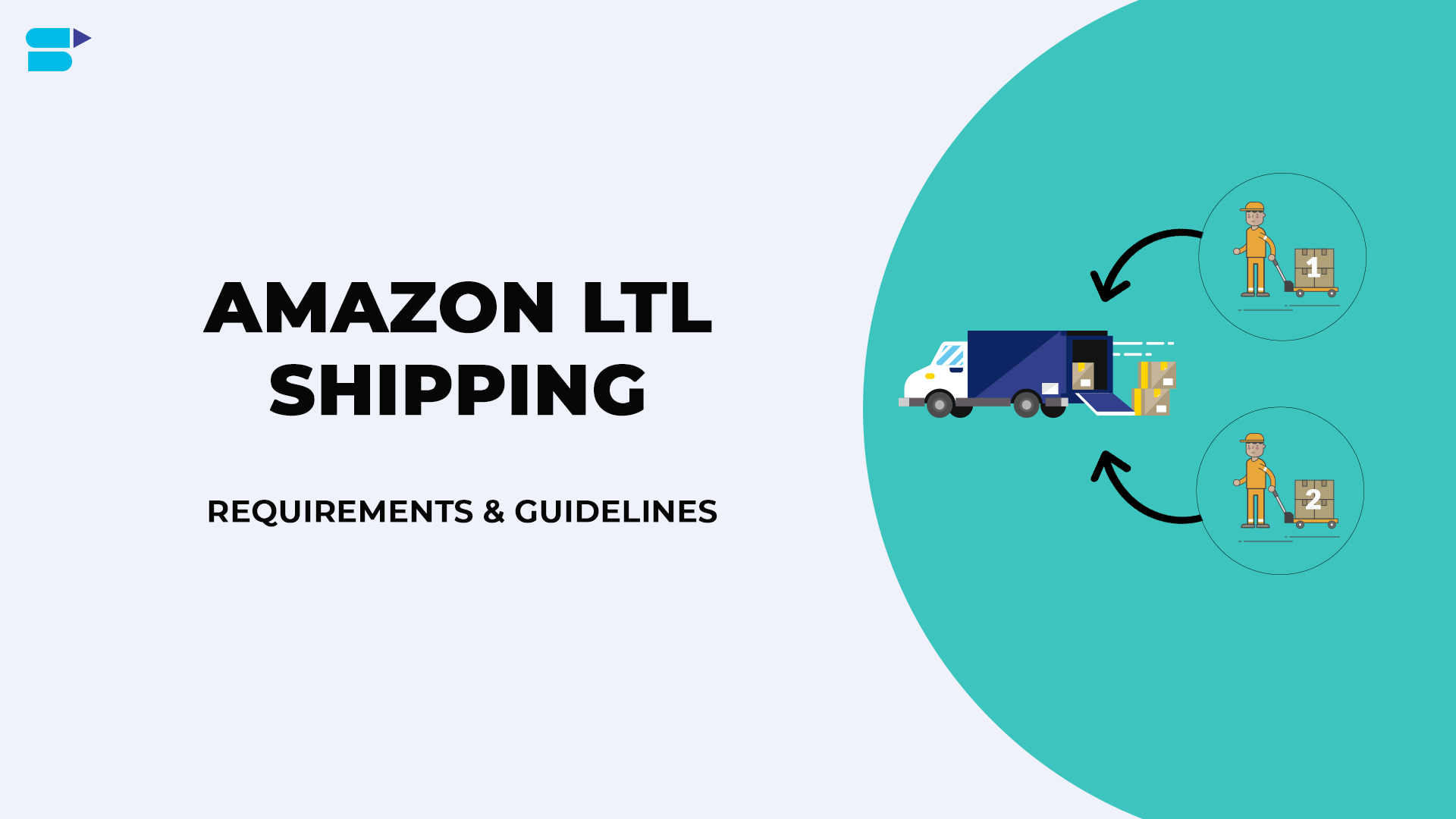



![A Definitive Guide On Amazon Freight Forwarders [FBA] 16 amazon freight forwarders](https://www.sellerapp.com/blog/wp-content/uploads/2019/03/amazon-freight-forwarders.jpg)

Michael
June 19, 2024Fantastic guide! Excited to boost my brand Using longtail keywords on Amazon with these tips!
Clare Thomas
June 28, 2024Very happy to hear that.
Kate Daisy
June 21, 2024This blog always adds value to my day. Keep it up!
Clare Thomas
June 28, 2024Glad you liked the article.